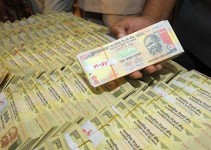Hydrocarbon Exploration Licensing Policy makes essential changes with market oriented reforms while correcting defects of old policy.
Earlier Exploration Policy: New Exploration Licensing Policy (NELP)
- Contract on the basis of model production sharing contract.
- No custom duty on imports required for petroleum operations
- Freedom to sell crude oil and natural gas in domestic market at market related price.
- Biddable cost recovery limit up to 100 percent.
- No cess on crude oil production.
New facets of Hydrocarbon Exploration Licensing Policy,
- uniform license for exploration and production of all forms of hydrocarbon,
- an open acreage policy,
- easy to administer revenue sharing model
- marketing and pricing freedom for the crude oil and natural gas produced.
Uniform Licence
- The uniform licence will enable the contractor to explore conventional as well as unconventional oil and gas resources including CBM, shale gas/oil, tight gas and gas hydrates under a single license.
Open Acreage Policy
- The concept of Open Acreage Policy will enable E&P companies choose the blocks from the designated area.
Revenue sharing model
- The earlier contracts were based on the concept of profit sharing where profits are shared between Government and the contractor after recovery of cost.
- Under the profit sharing methodology, it became necessary for the Government to scrutinize cost details of private participants and this led to many delays and disputes.
- Under the new regime, the Government will not be concerned with the cost incurred and will receive a share of the gross revenue from the sale of oil, gas etc.
- The previous profit-sharing model’s pitfalls became more obvious in the KG D6 field dispute with Reliance.
- This is in tune with Government’s policy of “Ease of Doing Business”.
Royalty, Marketing and Pricing freedom
- Why? higher risks and costs involved in exploration and production in difficult areas.
- Compared to NELP royalty rates to encourage exploration and production.
- A graded system of royalty rates have been introduced, in which royalty rates decreases from shallow water to deepwater and ultra-deep water.
- At the same time, royalty rate for onland areas have been kept intact so that revenues to the state governments are not affected.
- On the lines of NELP, cess and import duty will not be applicable on blocks awarded under the new policy.
- This policy also provides for marketing freedom for crude oil and natural gas produced from these blocks.
Need of such policy?
- The energy consumption in India is the fourth biggest after China, USA and Russia.
- The total primary energy consumption from crude oil (29.45%), natural gas (7.7%), coal (54.5%), nuclear energy (1.26%), hydro electricity (5.0%), wind power, biomass electricity and solar power is 595 Mtoe in the year 2013.
- According to the International Energy Agency, Indian demand will hit 10 million barrels per day by 2040, the steepest rise for any country.
- The vicissitudes of the global economy and geopolitics aside, the import bill is a constant drain on the exchequer.
- Also, dependence on imported petroleum continues to grow and is ultimately impacting the country’s long term growth.
- Lot of area has not been well explored.
- The need of introduction of much-needed capital and state-of-the-art technology to explore the sector.
Sources


